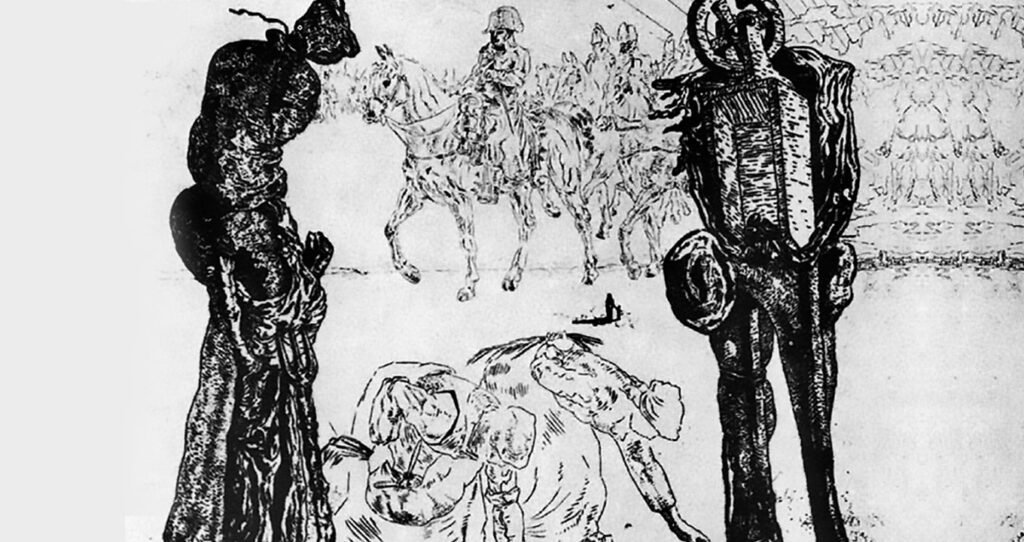Reading Les Chants de Maldoror is like entering a laboratory where literature tests the limits of form and meaning. Isidore Ducasse, writing as the Count of Lautréamont, composed six cantos that function as an experiment in language and perception.
The narrative fragments, the narrator shifts shape, and morality is confronted without disguise. Instead of a linear plot, the book stages states of consciousness and collisions of images that unsettle the reader. This discontinuous structure anticipates modern artistic strategies such as montage, displacement, and the shock of juxtaposition.
The Improbable Encounter as The Engine of Modernity
The famous simile of the fortuitous meeting between an umbrella and a sewing machine on a dissecting table became a password for the aesthetics of the improbable object. The image does not act as a refined metaphor but as a semantic short circuit that exposes a hidden logic of modernity.

What seems absurd gains critical force because it refuses evidence and highlights artifice. Instead of a cohesive world, a field of forces emerges where unrelated things discover secret kinships. This is the ground on which the grammar of the encounter is born, later transformed into method by surrealism.
The book also stages an ethics of vision. Maldoror turns against moral, religious, and aesthetic norms not merely out of rebellion, but to test the reach of language freed from restraints. Violence, blasphemy, and the grotesque are not gratuitous excesses but instruments that dismantle reading automatisms and put the reader on alert.
The prose aspires to a poetry without decorative lyricism or consolation, capable of sustaining the ambivalence between laughter and horror. Lautréamont thus offers one of the most influential models of modern sensibility: beauty contaminated by dissonance.
Surrealist Reception and Impact on The Visual Arts
The reception of Les Chants de Maldoror confirms its critical force. The passionate discovery by the surrealists, especially André Breton and Philippe Soupault, was not a generational whim but recognition of a technique. From the book, the group drew the lesson of unexpected association, automatism as openness, and the object as a poetic device.
The visual arts reacted immediately. Man Ray’s mysterious package, titled The Enigma of Isidore Ducasse, translates the maxim of the Cantos into a three-dimensional gesture. Decades later, Salvador Dalí illustrated Maldoror as if returning to the text its own imagistic power.
Painting, photography, and avant-garde objects learned from Lautréamont’s prose how to produce estrangement and generate new ways of perceiving.
Between Maldoror and Poésies: The Productive Tension
The other face of the author, revealed in Poésies, is crucial for understanding the modernity that arises from Lautréamont. There appears the idea that plagiarism is necessary because progress implies it. This notion displaces authorship and anticipates practices of appropriation that would define avant-gardes and neo-avant-gardes.
Between Maldoror and Poésies lies a productive tension. On one side, visionary excess and unruliness as method. On the other, the programmatic coolness that reorganizes legacies and proposes an ethics of citation. Modern art inherited this dual impulse, sometimes through shock, sometimes through conscious montage.
Les Chants de Maldoro: Lautréamont and The Invention of The Modern Gaze
The legacy of Les Chants de Maldoror is not that of a merely provocative book. It is a critical device that taught art to think through images resistant to paraphrase. By exploring the violence of the unusual, Lautréamont liberated objects from their use and words from their habitual employment.
From then on, the contemporary learned that creating means bringing together what should not meet, forging unexpected proximities, and undermining the solidity of meaning to open the way for multiple readings.
Maldoror offers no redemption but a method. It is precisely this method that modern art inherits: the courage to turn the strange into a tool, the lucidity to know that beauty may arise from confrontation, and the discipline to work with contradiction without ever erasing it.



